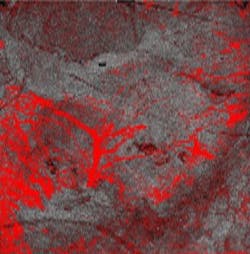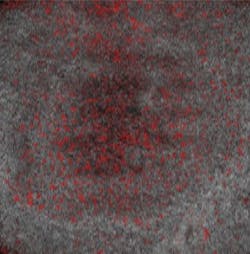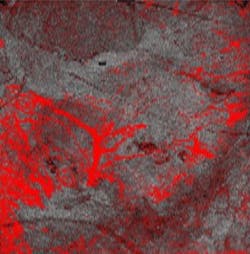OCT imaging method shows how blood vessel growth changes in melanoma
In new clinical study, an international team of researchers has shown that dynamic optical coherence tomography (D-OCT) imaging of melanoma reveals changes to the blood vessels that correlate with the depth of its invasion. The researchers believe this could lead to a faster method of rapidly assessing how dangerous a given melanoma is.
A more rapid assessment of the risk would potentially allow patients with more serious invasive disease access to the right treatment more directly, doing away with delays inherent in the traditional diagnosis. The technique may also lead to reducing the number of patients with less aggressive tumors receiving sentinel lymph node biopsies, an expensive in-patient procedure that sometimes results in unpleasant long-term side effects.
The clinical study looked at the blood vessel shapes in OCT images of 127 melanomas at a variety of states of disease progression, collected at four leading European dermatology groups (University of Modena and Reggio Emilia, General Hospital Augsburg, University of Copenhagen, and Collegium Medicum Berlin). The research team used Michelson Diagnostics' VivoSight OCT scanner, which has regulatory clearance in Europe, the U.S., and Australia for clinical use in imaging skin. The scanner was equipped with Dynamic OCT software that detects and displays the tiny blood vessels in the skin and the tumor.
A dynamic OCT image of early-stage melanoma taken with the VivoSight scanner is shown; the red dots and lines are small blood vessels. (Photo credit: PRNewsfoto/Michelson Diagnostics)
"Cancers grow their own blood vessel network to supply oxygen and nutrients," explains Nathalie de Carvalho of the University of Modena and Reggio Emilia and the study's lead author. "We analyzed the shapes of the vessels in the OCT images of melanomas and correlated the frequency of different shapes with the Breslow depths (the thickness of the tumors, measured from biopsy samples). We found that certain vessel shapes appeared much more frequently in thicker tumors. The vessels grown by the tumor seem to grow more chaotically and become more malformed as the cancer progresses."
The Breslow depth is already used to assess the progress of the disease from early stages to serious metastatic disease, but it takes time for the biopsy results to come back from the laboratory. This new imaging approach may provide a shortcut to more quickly identify advanced metastatic melanomas so that patients can be fast-tracked to the right treatment.
A dynamic OCT image of advanced melanoma taken with the VivoSight scanner is shown; the blood vessel pattern has changed and now shows large, distorted blood vessels. (Photo credit: PRNewsfoto/Michelson Diagnostics)
"Our goal with this work is to help develop a faster, more-efficient, and less-invasive diagnostic and treatment pathway for melanoma," says Julia Welzel of General Hospital Augsburg. "Patients with advanced disease should get aggressive treatment as quickly as possible--also, those with early-stage melanomas should not have to undergo expensive invasive sentinel lymph node biopsy operations if their melanoma is reliably confirmed as very low-risk. We believe dynamic OCT imaging could help with these goals and the results of this study are very encouraging. The next stage of our work is to analyze the link between vessel shapes and the actual degree of metastasis of the melanomas in a larger cohort, and not just the Breslow depth."
Full details of the work appear in the journal Experimental Dermatology.


